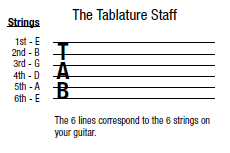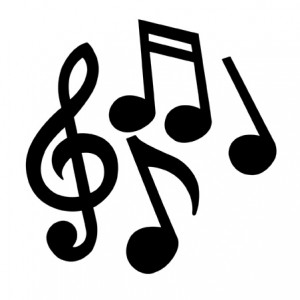
Categories
- Advanced Guitar (7)
- Beginner Guitar (22)
- Contest (7)
- Course Walk Through (8)
- Fingerstyle (3)
- Gear (5)
- Gibson (9)
- Gibson's Learn & Master Guitar (74)
- Guest (5)
- Guitar Gathering (8)
- Guitar Tips (34)
- Guitar Video (22)
- Guitarists (9)
- In-Studio (1)
- Intermediate Guitar (17)
- Maintenance (3)
- Mobile App (4)
- Monthly Video Tip (21)
- Playing Technique (5)
- Sale (4)
- Student Profile (22)
- Student Support Forum (17)
Archives
- April 2025(1)
- March 2025(1)
- February 2025(1)
- January 2025(1)
- December 2024(1)
- November 2024(1)
- October 2024(1)
- September 2024(1)
- August 2024(1)
- July 2024(1)
- June 2024(1)
- May 2024(1)
- April 2024(1)
- March 2024(1)
- February 2024(1)
- January 2024(1)
- December 2023(1)
- November 2023(1)
- October 2023(1)
- September 2023(1)
- August 2023(1)
- July 2023(1)
- June 2023(1)
- May 2023(1)
- April 2023(1)
- March 2023(1)
- February 2023(1)
- January 2023(1)
- December 2022(1)
- November 2022(1)
- October 2022(1)
- September 2022(1)
- August 2022(1)
- July 2022(1)
- June 2022(1)
- May 2022(1)
- April 2022(1)
- March 2022(1)
- February 2022(1)
- January 2022(1)
- December 2021(1)
- November 2021(1)
- October 2021(1)
- September 2021(1)
- August 2021(1)
- July 2021(1)
- June 2021(1)
- May 2021(1)
- April 2021(1)
- March 2021(1)
- February 2021(1)
- January 2021(1)
- December 2020(1)
- November 2020(1)
- October 2020(1)
- September 2020(1)
- August 2020(1)
- July 2020(1)
- June 2020(1)
- May 2020(1)
- April 2020(1)
- March 2020(1)
- February 2020(1)
- January 2020(1)
- December 2019(1)
- November 2019(1)
- October 2019(1)
- September 2019(1)
- August 2019(1)
- July 2019(1)
- June 2019(1)
- May 2019(1)
- April 2019(1)
- March 2019(1)
- February 2019(1)
- January 2019(1)
- December 2018(1)
- November 2018(1)
- October 2018(1)
- September 2018(1)
- August 2018(1)
- July 2018(1)
- June 2018(1)
- May 2018(1)
- April 2018(1)
- March 2018(1)
- February 2018(1)
- January 2018(1)
- December 2017(1)
- November 2017(1)
- October 2017(1)
- September 2017(1)
- August 2017(1)
- July 2017(1)
- June 2017(1)
- May 2017(1)
- April 2017(1)
- March 2017(1)
- February 2017(1)
- January 2017(1)
- December 2016(1)
- November 2016(1)
- October 2016(1)
- September 2016(1)
- August 2016(1)
- July 2016(1)
- June 2016(1)
- May 2016(1)
- April 2016(1)
- March 2016(1)
- February 2016(1)
- January 2016(1)
- December 2015(1)
- November 2015(1)
- October 2015(1)
- September 2015(1)
- August 2015(1)
- July 2015(1)
- June 2015(1)
- May 2015(1)
- April 2015(1)
- March 2015(1)
- February 2015(1)
- January 2015(1)
- December 2014(1)
- November 2014(1)
- October 2014(1)
- September 2014(1)
- August 2014(1)
- July 2014(1)
- June 2014(1)
- May 2014(1)
- April 2014(1)
- March 2014(1)
- February 2014(1)
- January 2014(1)
- December 2013(1)
- November 2013(1)
- October 2013(1)
- September 2013(1)
- August 2013(1)
- July 2013(1)
- June 2013(1)
- May 2013(1)
- April 2013(1)
- March 2013(1)
- February 2013(1)
- January 2013(1)
- December 2012(1)
- November 2012(1)
- October 2012(1)
- September 2012(1)
- August 2012(1)
- July 2012(1)
- June 2012(1)
- May 2012(1)
- April 2012(1)
- March 2012(1)
- February 2012(1)
- January 2012(1)
- December 2011(1)
- November 2011(1)
- October 2011(1)
- September 2011(1)
- August 2011(1)
- July 2011(1)
- June 2011(1)
- May 2011(1)
- April 2011(1)
- March 2011(1)
- February 2011(1)
- January 2011(1)
- December 2010(1)
- November 2010(1)
- October 2010(1)
- September 2010(1)
- August 2010(1)
- July 2010(1)
- June 2010(1)
- May 2010(1)
- April 2010(1)
- March 2010(1)
- February 2010(1)
- January 2010(1)
Guitar Tab vs. Standard Notation
Saturday, February 26, 2011If you are unfamiliar with guitar tablature (most of the time called "TAB"), let's set you straight before moving into the main discussion.
TAB is a way to notate musical notes and chords that is specific to guitar. (There have been tablature schemes invented for other fretted instruments too, but you'll have to find another article for lute TAB.) Just know that TAB was invented before the guitar. It almost died out but was revived after WWII by thousands of new guitar players.
The image is taken from our lesson book (session 3) below shows both Standard Notation (top staff) and TAB (bottom staff):

The first thing to know about TAB is that it's "visually analogous". That means that it paints a picture that roughly corresponds to your guitar neck. Instead of telling you what notes you'll be playing, letting you decide what strings, frets, and fingers to use when playing those notes, TAB gives you a visual "how to" rather than the note names.
You can see why TAB would become popular with guitarists. It offers a mental "shortcut" to learning. If you're looking at TAB, it means that some other guitarist took the actual notes and did some mental interpretation for you ahead of time to produce that TAB.
HOW DOES TAB WORK?
There are 6 horizontal lines in guitar tab (one for each string, counted from top to bottom). The top most line represents the highest pitched string on your guitar, the first string. The lowest line represents the 6th string (the lowest pitched string). I'm gonna call those "string lines." There... I said it.
If you're looking at TAB, you'll notice numbers on the string lines. Those indicate what fret to press on that string. I'm gonna call those "fret numbers". (If you see a "0" on a string, that means you'll play that string open... not pushing down any fret.)
If you see just one number by itself, that's a single note to be played by itself. If you see several numbers stacked on top of each other, that's a chord. You'll also see vertical dividing lines that cut through all 6 string lines. Those divide measures in the song. If the song is in 4/4 time, then all the notes between two measure dividing lines will total to exactly 4 beats.
But that brings us to the one...
TABLATURE FLAW
There is one major drawback built in to regular guitar TAB. There's no indication built into the scheme for how long any given note or chord should be played. That presents a big problem IF you've never heard the song before. If you've heard it before, you can usually figure out the timing using nothing but TAB and your memory of the song.
Now let's get back to our original topic: Comparing guitar TAB to what is called "standard notation" (notes-on-a-staff).
Standard notation has a couple advantages over guitar TAB:

First of all, once you learn to read notes on a staff, you can actually play songs you've never heard and you can work songs out from NON-guitar sheet music. That's a nice advantage if you have a sister who plays piano and has amassed some song books or sheet music to songs you want to learn.
Second, there's that timing issue we talked about with TAB. With standard musical notation, you don't have that disadvantage. The timing of each note is built into its shape. A whole note (a note lasting a whole measure of 4 beats) looks visually different from a half note (lasts only 2 beats). The whole note looks like an egg. The half note looks like an egg with a stick growing upward from its end.
So everything you'd need to play a song is communicated in standard notation... except one thing: Which fingers do I use to push down which strings?
In this way, TAB is superior to notation, precisely because it is visual in scheme. Now don't get me wrong here... TAB does NOT tell you where to put your fingers. However, because you see a visual representation of which strings to play and which frets to press, you get a head start on which fingers to use. Your hands will quickly get a knack for using the easiest combination of fingers when looking at TAB.
What I strongly suggest is that you learn both! There are enough early pay-offs to learning TAB that it's worth diving into right away. You get quicker "musical gratification" from TAB.
But once you've learned that, go ahead and start learning to "read notes" as they say. The world will open up to you once you do.
 Support Forum
Support Forum